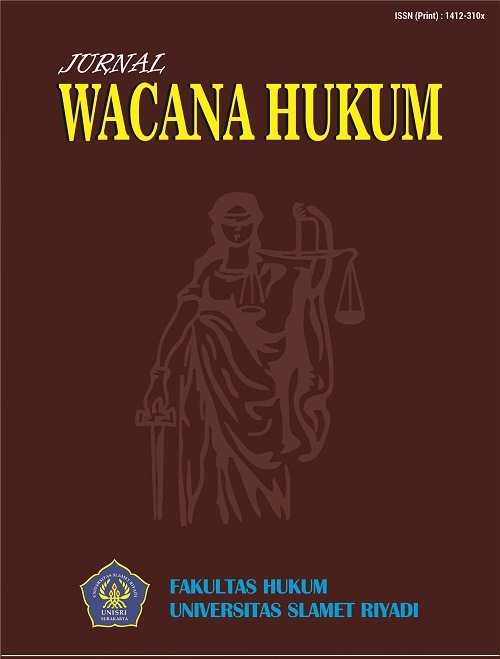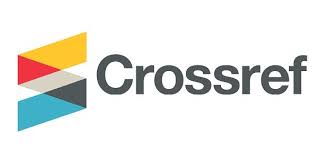The Compliance Of Autonomous Weapons To International Humanitarian Law: Question Of Law And Question Of Fact
DOI:
https://doi.org/10.33061/wh.v28i1.6689Keywords:
nternational Humanitarian Law, Autonomous Weapons, Armed ConflictsAbstract
International Humanitarian Law (IHL) sets the rules to prevent human from doing excessive damages upon humanity in the time of war or armed conflicts. However, a new weapon which is called autonomous weapons rises a serious concern today because it can search, detect, identify, select, track and engage targets without human interventions. This study aims to clarify which weapons are  regarded as “autonomous†today in order to  find out whether the present autonomous weapons comply the IHL principles. This study adopts normative legal research.  The data types used is based on secondary data which consist of Primary legal materials, namely the Geneva Convention 1949 and its Additional Protocols. In addition, secondary legal materials are used to support the primary legal materials are obtained from articles and books.  The data is collected through library research and analyzed by using a qualitative-descriptive approach. It finds that a weapon system which limits human control and intervention, is not automatically classified as an autonomous weapon due to the level of human and AI engagement in the weapon. The use of autonomous weapon in armed conflicts does not entirely fulfill the principles of IHL, particularly a fully autonomous weapon because it will never satisfy the principle of distinction, proportionality, the prohibition of attack against those hors de combat and humanity.
References
Antoine A. Bouvier, “International Humanitarian Law and the Law of Armed Conflictâ€
Peace Operations Training Institute,†Second edition, (December 2012).
Hui Min Huang, “Autonomy Levels For Unmanned Systems (ALFUS) Framework†NIST,
(11 June 2017).
International Committee Of The Red Cross, “What is international humanitarian law?â€
ICRC, (31 December 2014).
Gillian Brockell, Wahington Post, January 9, 2020 “Iran’s president reminded the
world that the U.S. mistakenly shot down an airliner. Now, Iran is suspected of
doing the sameâ€, https://www.washingtonpost.com/history/2020/01/06/iranair-flight-irans-president-invokes-tragedy-many-americans-have-forgotten/
Global Security.Org, Samsung Techwin SGR-A1 Sentry Guard Robot,
https://www.globalsecurity.org/military/world/rok/sgr-a1.htm
Human Rights Watch, “Precedent for Preemption: The Ban on Blinding Lasers as a
Model for a Killer Robots Prohibitionâ€,
Lelouche Nataniel, et al., “iCLEAN – Loitering Attack UCAV†Technion Institute of
Technology, (2012).
Marine Corps Warfighting Publications, “MAGTF Anti Armor Operations,†Chapter 2,
Marines, (2 August 2016).
Neil Davidson, “A legal perspective: Autonomous weapon systems under international
humanitarian law†ICRC, (31 January 2018).
Peter Mahmud Marzuki, “Penelitian Hukum†Jakarta Kencana, (2005).
Soerjono Soekanto and Sri Mamuji, “Penelitian Hukum Normative Suatu Tinjauan
Singkat†PT Raja Grafindo Persada, (2003).
Ty McCormick, “Lethal Autonomy: A Short Historyâ€
https://foreignpolicy.com/2014/01/24/lethal-autonomy-a-short-history/
United Nations decision to announce arms embargo and economic sanctions on the
Federal Republic of Yugoslavia because of the excessive force used by
government to destroy the terrorism act. United Nations Security Council
Resolution 1160 (1998).
Vincent Boulanin and Maaike Verbruggen, “Mapping The Development Of Autonomy InWeapon Systems†Researchgate, (November 2017).
Zainuddin Ali, Metode Penelitian Hukum, Jakarta: Sinar Grafika (2016)
Downloads
Published
How to Cite
Issue
Section
License
Copyright (c) 2022 Rina Shahrullah, Muhammad Samsu Saputra

This work is licensed under a Creative Commons Attribution-ShareAlike 4.0 International License.
Authors who publish with this journal agree to the following terms:
- Copyright on any article is retained by the author(s).
- The author grants the journal, the right of first publication with the work simultaneously licensed under a Creative Commons Attribution License that allows others to share the work with an acknowledgment of the work’s authorship and initial publication in this journal.
- Authors are able to enter into separate, additional contractual arrangements for the non-exclusive distribution of the journal’s published version of the work (e.g., post it to an institutional repository or publish it in a book), with an acknowledgment of its initial publication in this journal.
- Authors are permitted and encouraged to post their work online (e.g., in institutional repositories or on their website) prior to and during the submission process, as it can lead to productive exchanges, as well as earlier and greater citation of published work.
- The article and any associated published material is distributed under the Creative Commons Attribution-ShareAlike 4.0 International License

















.png)


